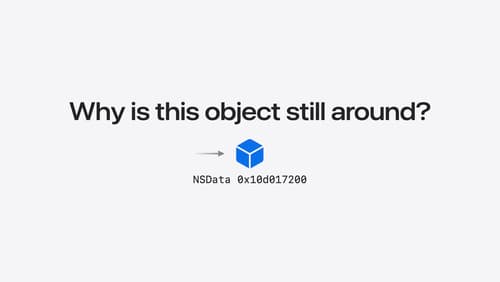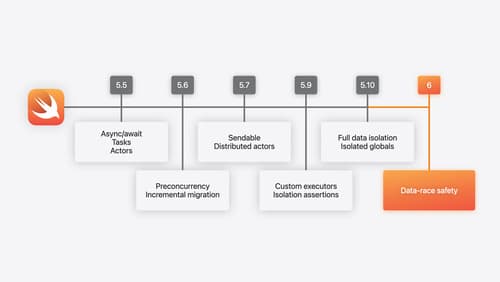how do I convert from objc to swift?
Asked on 2024-07-30
1 search
To convert from Objective-C to Swift, you can follow several steps and best practices. Here are some key points to consider:
-
Understand Swift Basics: Familiarize yourself with Swift's syntax and features. You can start with sessions like A Swift Tour: Explore Swift’s features and design which covers Swift's classes, inheritance, and memory management.
-
Interoperability: Swift provides interoperability with Objective-C, allowing you to incrementally adopt Swift in your projects. You can call existing Objective-C APIs from Swift and vice versa. This is particularly useful for large projects where a complete rewrite isn't feasible. For more details, you can refer to the session Go small with Embedded Swift.
-
Automatic Reference Counting (ARC): Both Objective-C and Swift use ARC for memory management, but there are some differences. Swift's ARC is more predictable and can help avoid memory leaks. You can learn more about this in the session Analyze heap memory.
-
Protocols and Delegates: Swift uses protocols extensively, which can replace many uses of inheritance in Objective-C. Protocols in Swift are more flexible and can be used with both value and reference types. This is discussed in the session A Swift Tour: Explore Swift’s features and design.
-
Concurrency: Swift has robust concurrency features that can help you write safer and more efficient code. If you are migrating code that involves concurrency, you should look into Swift's concurrency model. The session Migrate your app to Swift 6 covers adopting concurrency features in Swift.
-
C Interoperability: If your Objective-C code interacts with C, Swift also provides interoperability with C. This can be useful for low-level operations or when using C libraries. The session What’s new in Swift discusses C interoperability in Swift.
Relevant Sessions
- A Swift Tour: Explore Swift’s features and design
- What’s new in Swift
- Migrate your app to Swift 6
- Go small with Embedded Swift
- Analyze heap memory
By following these steps and utilizing the resources from WWDC sessions, you can effectively convert your Objective-C code to Swift.

Explore Swift performance
Discover how Swift balances abstraction and performance. Learn what elements of performance to consider and how the Swift optimizer affects them. Explore the different features of Swift and how they’re implemented to further understand the tradeoffs available that can impact performance.

Analyze heap memory
Dive into the basis for your app’s dynamic memory: the heap! Explore how to use Instruments and Xcode to measure, analyze, and fix common heap issues. We’ll also cover some techniques and best practices for diagnosing transient growth, persistent growth, and leaks in your app.

What’s new in Swift
Join us for an update on Swift. We’ll briefly go through a history of Swift over the past decade, and show you how the community has grown through workgroups, expanded the package ecosystem, and increased platform support. We’ll introduce you to a new language mode that achieves data-race safety by default, and a language subset that lets you run Swift on highly constrained systems. We’ll also explore some language updates including noncopyable types, typed throws, and improved C++ interoperability.
